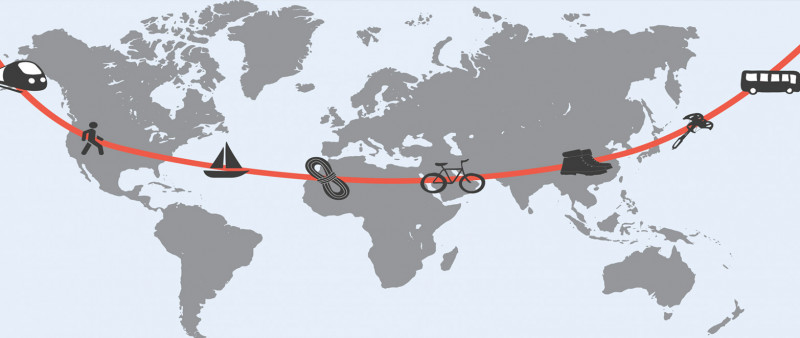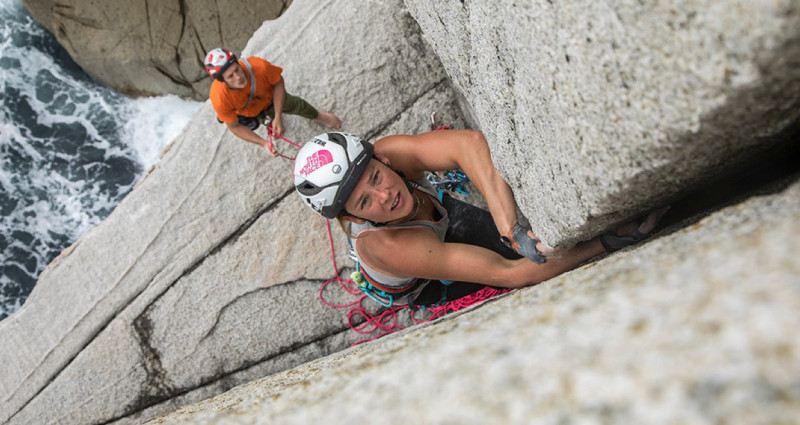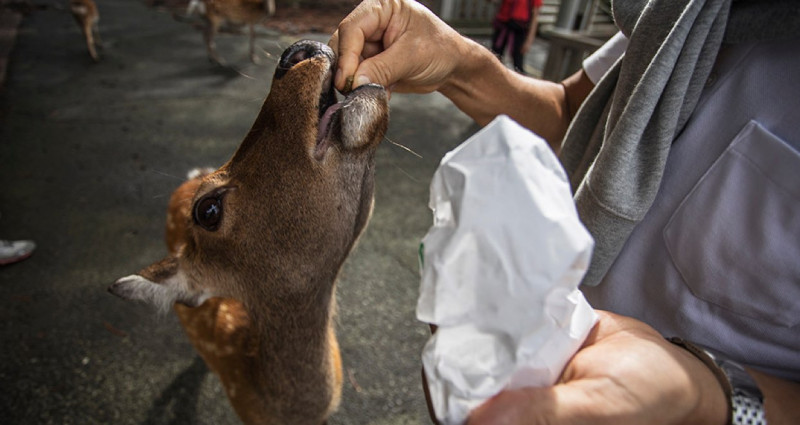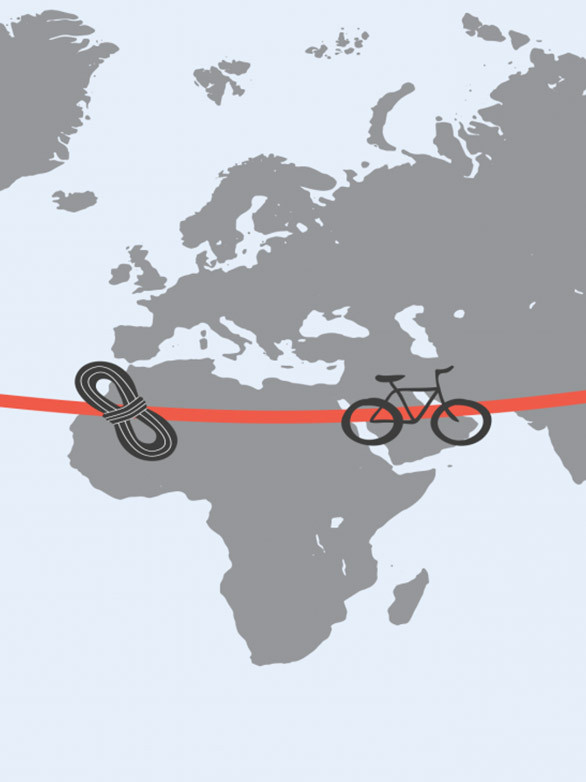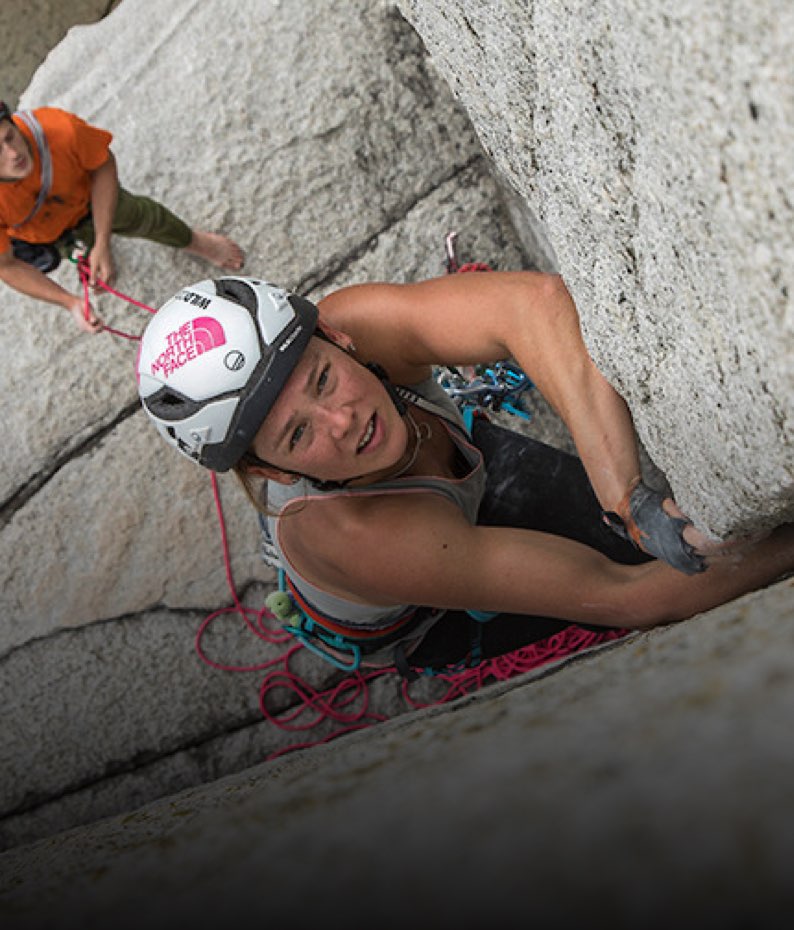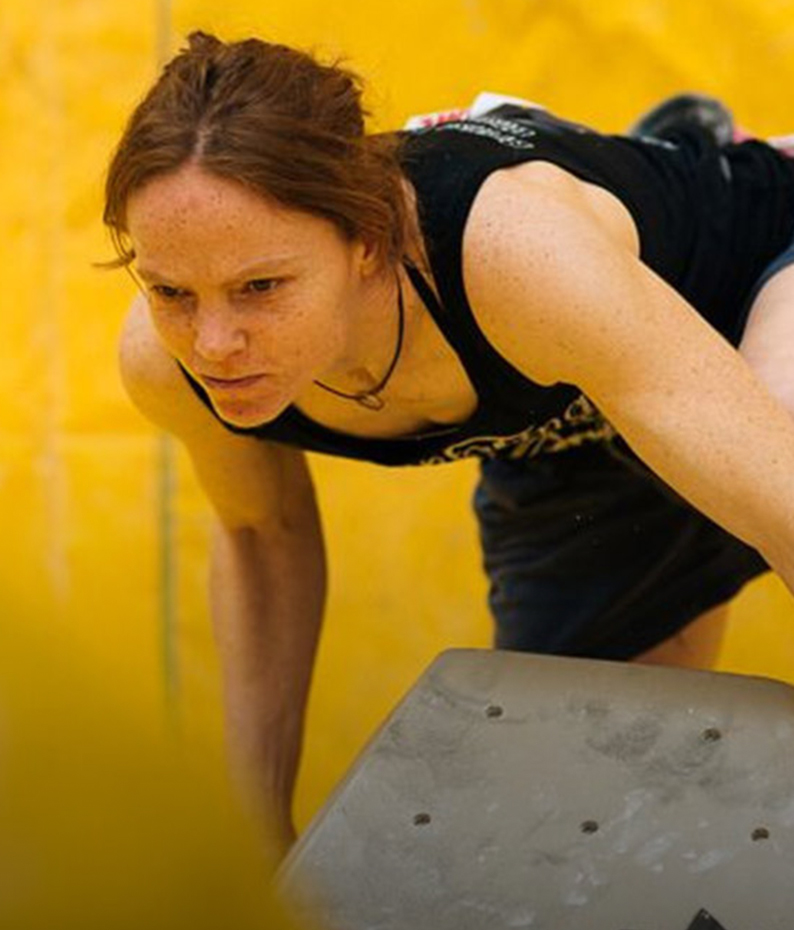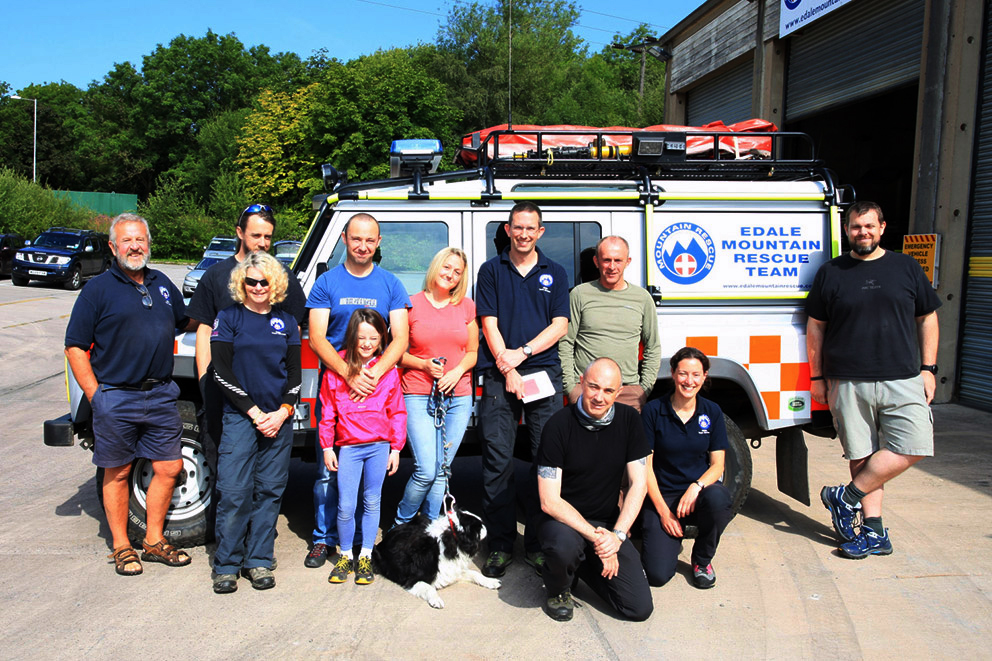SLOW TRAVEL
EIN UMWELTBEWUSSTER ANSATZ ZUM KLETTERN AUF DER GANZEN WELT
Verlangsame deine Geschwindigkeit – Tauche in ein Ziel ein – Reise bewusst. Bei Slow Travel geht es darum, einen neuen Ansatz des Reisens aufzugreifen.
Willkommen bei Slow Travel
Für uns als Kletterer ist das Reisen ein großer Teil unseres Lebensstils. Neue Felswände, neue Routen, globale Listen mit Zielen: all das macht uns aus. Es ist auch ein großer Teil von Wild Country und wir glauben, dass es für Menschen wichtig ist, zu reisen und verschiedene Kulturen und Lebensweisen kennenzulernen, sowie die Humanwissenschaften aus erster Hand zu erfahren. Reisen bereichern Leben, überwinden Grenzen, und schaffen Vielfalt und Toleranz.
Doch wir wissen, dass Reisen Auswirkungen auf die Umwelt haben und wir wollen die Art und Weise unseres Reisens verändern. Wir wollen anderen Kletterern Ressourcen bieten, um einen Ansatz des Reisens zu finden und für uns alle das Thema Travel Slow ins Gespräch bringen.
Wo alles begann
Als unsere Freunde und Sportler James Pearson und Caroline Ciavaldini von Once Upon A Climb mit der Idee auf uns zukamen, einen umweltfreundlichen, alternativen Trip zu machen, entwickelte sich das Gespräch schnell vom Klettern hin zu zahlreichen Konversationen über Slow Travel.
Durch James und Carolines Erfahrung als professionelle Kletterer konnten sie die Welt bereisen und auf fast jedem Kontinent Kletterabenteuer erleben. Dadurch hatten sie die Möglichkeit, einige der größten Umweltveränderungen aus nächster Nähe zu sehen. Diese Einblicke wurden von Carolines Biologie- und Pädagogikstudium verstärkt und brachten sie dazu, ihre Art des Reisens zu überdenken. Es beeinflusste ihre Planung von Trips und bewegte sie dazu, Mossy Earth zu verwenden, einen privaten Service zur Kompensation von Emissionen, um ihre Reisen auszugleichen.
Aber für ihr nächstes Projekt in Ordesa, Spanien wollten sie einen ganz anderen Weg gehen. Angesichts von James und Carolines Plan, mit dem Fahrrad über die Pyrenäen zu fahren und El Ojo Critico zu besteigen, eine 400 Meter lange 8a-Route, wollen wir dir Slow Travel vorstellen, ein Ethos für Wild Country und ein Lebensstil für Once Upon a Climb.
Der Slow Travel-Ethos
Verlangsame deine Geschwindigkeit – Tauche in ein Ziel ein – Reise bewusst
Slow Travel ist eine umweltbewusste Art des Reisen. Es geht nicht darum, das Reisen einzustellen, es geht nicht darum, gänzlich auf Reisen mit dem Flugzeug oder Auto zu verzichten. Es geht darum, Trips bewusst zu planen und Möglichkeiten zu finden, um deinen CO2-Fußabdruck zu reduzieren. Es geht darum, ein Gleichgewicht zwischen Trips auf der ganzen Welt und denen in der Nähe deines Zuhauses zu finden, alternativen Transport zu nutzen, und deine umweltfreundlichen Gewohnheiten mit auf Reisen zu nehmen.
Es geht auch darum, langsamer zu reisen und in ein Reiseziel einzutauchen. Die Kultur und deine Umgebung wahrzunehmen, und dein Tempo zu verändern.
Slow Travel Tipps
Hier findest du Ressourcen, die wir stetig für Kletterer und Reisende auf der ganzen Welt erweitern werden.
Nimm dir genug Zeit
Der Weg ist das Ziel, also nimm dir genug Zeit, um ihn zu genießen. Das bedeutet nicht, dass du unendlich viel Urlaub brauchst, sondern dass du dir sowohl am Abfahrts- als auch Zielort Zeit nimmst, um zu reisen und zu genießen, statt nur zu einem einzigartigen Kletterspot zu hetzen.
Überdenke deine Routenplanung
Deine gesamte Route ist Teil des Trips. Anstatt so schnell wie möglich zu einem Spot zu gelangen, plane eine Route, die es dir ermöglicht, unterschiedliche Orte, Menschen und Kulturen zu besuchen.
Wenn du voll und ganz in das Reiseerlebnis eintauchst, denkst du nicht mehr in einzelnen Reisetagen und der gesamte Trip kommt dir länger vor.
Erwäge, deine schwere Ausrüstung vorauszuschicken
Schwere, unhandliche Gegenstände wie deine Kletterausrüstung im Voraus an dein Reiseziel zu schicken, eröffnet dir Reisemöglichkeiten. Die Reise mit dem Fahrrad wird kontrollierbar, mit Zug und Bus entspannter, und deine Reiseerfahrung unkomplizierter.
Obwohl das vielleicht weniger umweltfreundlich erscheint, bezieht sich dein Kohlenstoffverbrauch auf das Gewicht. Ohne überflüssige Ausrüstung bei deinem Transport verwendest du dieselbe Menge Kraftstoff. Ein weiterer Vorteil der Versandkosten ist, dass du dir Gedanken darüber machst, was du für deinen Trip wirklich brauchst.
Engagiere deine Guides vor Ort
Engagiere deine Guides vor Ort, wenn du in ein fremdes Land reist. Das bietet dir nicht nur mehr Möglichkeiten eines Einblicks in das Klettern, die Berge und die Gemeinschaft, sondern du unterstützt außerdem die Wirtschaft deines Reiseziels.
Die lokale Kletter-Community zu unterstützen ist immer wichtig, aber wir betonen das besonders in den Gegenden, die noch am Anfang der Entwicklung stehen. Achte aber immer darauf, zertifizierte Guides zu wählen.
Bring deine eigenen Wasserflaschen mit
Lass deine Flasche von den Flugbegleitern im Flugzeug auffüllen statt dir jedes Mal einen neuen Becher geben zu lassen.
Wenn das Leitungswasser vor Ort bedenkenlos getrunken werden kann, fülle deine Flasche damit auf.
Wir sollten am Tag drei Liter Wasser trinken, das summiert sich schnell.
Bringe einen wiederverwendbaren Stoffbeutel mit
Wir sind immer wieder erstaunt, wie oft so ein kleiner Gegenstand Verwendung findet: beim Lebensmitteleinkauf, beim Kauf von Ausrüstung, als Schultertasche bei einem Spaziergang durch den Ort. Je länger wir reisen, desto mehr Verwendungsmöglichkeiten finden wir.
Du verwendest sie zu Hause, also vergiss nicht, einen mit auf Reisen zu nehmen, damit du keine Plastikbeutel benötigst.
Packe ein Stück Bio-Seife ein
Körper, Kleidung, Geschirr. All das wird unterwegs schmutzig. Ein Stück biologisch abbaubare oder Campingseife ist super, um alles zu reinigen. Wir empfehlen die Stückform, da du so keinen Plastikmüll produzierst wie bei Flüssigkeiten oder Gels.
Ein zusätzlicher Vorteil beim Einsparen von Gewicht ist, Hygieneartikel wie Zahnpasta zu teilen.
Bring A Small Chamois Towel
You have your soap now you need to get dry. These towels absorb a lot of water, dry fast, and pack small. We continue to find more and more used for them too and then can easily wash them along the way.
Slow Travel Resources
This is a tool that we will continue to expand for climbers and travelers around the world.
Mossy Earth - Carbon Offset Your Travels
At Mossy Earth we believe that every attempt should be made to reduce one's carbon footprint before offsetting is an option and that offsetting cannot be used as an excuse to continue polluting. If we can say, hand on heart, that we've done everything in our power to minimize our footprint, then carbon offsetting must be seen as the next logical solution to effectively negate our impact on the environment.
You can carbon offset an unavoidable flight for as little as £2.00 per hour or a road trip for £2.50 per 1000km. What’s more, our trees play a pivotal role in restoring key ecosystems and bringing the wilderness back to Europe. We plant only native tree species in protected conservation projects to ensure your trees stay wild forever! We’ll also send you a photo and GPS coordinates of your trees should you ever wish to visit them on your next climbing adventure. Visit Mossy Earth to learn more.

SLOW TRAVEL
An environmentally conscious approach to climbing across the world.
Slow down your pace - Immerse yourself in a destination - Travel Consciously. Slow Travel is about taking a new approach to travel.
Welcome To Slow Travel
We realize as climbers traveling is a big part of our lifestyle new crags, new routes, global tick-lists this is all part of who we are. It is a big part of Wild Country too and we believe it is important for people to travel to experience different cultures, different ways of living, and learn humanities first-hand. Traveling enriches lives, breaks down boundaries, and creates diversity and tolerance.
We know travel has an impact on the environment though and we want to make a change in how we travel. We want to provide resources for other climbers to approach travel differently and open up the conversation for all of us to Travel Slow.
Where It All Started
When our friends and athletes James Pearson and Caroline Ciavaldini from Once Upon A Climb came to us with an idea to do an eco-friendly, alternative travel trip the conversation quickly spun from climbing into countless conversations on Slow Travel.
With James and Caroline’s experience as professional climbers, they have been able to travel the world, experiencing climbing on nearly every continent. This has allowed them the opportunity to see first-hand some of the major shifts taking place environmentally. These insights compounded by Caroline’s studies in Biology and Education led them to rethink how they travel; influencing how they plan for trips and motivating them to use Mossy Earth, a private carbon offsetting service, to help offset their travels.
But, for their next project in Ordesa, Spain they wanted to take a different route altogether. In light of James and Caroline's plan to bike over the Pyrenees mountains and climb El Ojo Critico; a 400m, 8a route we want to introduce you to Slow Travel, an ethos for Wild Country and a lifestyle for Once Upon a Climb.
The Slow Travel Ethos
Slow Down Your Pace – Immerse Yourself In A Destination – Travel Consciously
Slow Travel is an environmentally conscious way of traveling. It does not mean eliminating travel, it does not even mean fully eliminating taking planes, or automobiles. It is about being actively conscious when planning trips, finding ways to reduce your carbon footprint. It means balancing trips across the globe with ones closer to home, utilizing alternative transportation, and taking your eco-friendly habits with you wherever you travel.
It also means slowing down your travel and immersing yourself in a destination. Taking in the culture, taking in your surroundings, and changing your pace.
Slow Travel Tips
This is a resource that we will continue to expand for climbers and travelers around the world.
Give Yourself Plenty Of Time
The travel is part of the trip so give yourself plenty of time to enjoy. This does not mean you are required to have an infinite amount of holidays but give yourself time on either end of your destination to travel and enjoy instead of just rushing to an iconic location to climb.
Reconsider Your Route Planning
Your entire route is part of the trip. Instead of going as quickly as possible to one spot plan a route that allows you to experience different places, people, and cultures along the way. Immersing yourself in the experience of travel dissolves the idea of travel days making the entire trip feel longer.
Consider Shipping Your Heavy Hardware Ahead
Shipping heavy, bulky items like your climbing gear ahead to your final destination opens up travel options. Bikes become manageable, train and buses more relaxing, and being fluid in travel experiences easier. Although this might seem less eco-friendly your carbon consumption is based off weight, so without adding excess equipment to your shipment, you are using the same amount of fuel. The added benefit to paying shipping costs is you start by considering what is excess for your trip.
Learn The Local Ethics
Putting up a new route, concerned about chossy rock, or run out climbs? Do research or talk with locals about the customs for climbing in those areas. Stashing gear, placing bolts, or even understanding the motivation behind different routes can ensure you are climbing in alignment with the local traditions. This can also help you better understand the history of the routes, reasons behind climbs, and give you inspiration for specific climbs
Hire Guides Locally
If you are traveling to a foreign country hire your guides locally. Not only does this open you up to more opportunities of an inside view of the climbing, mountains, and community but you will be helping the community economically where you are visiting.
Supporting the local climbing community is always important but we emphasize this most in areas that are in the early stages of development. Always look to hire a certified guides though.
Bring Your Own Water Bottles
If you are on a flight have the attendants fill this instead of giving you a fresh cup every time.
If you are in a location where the tap water is safe to drink, fill up and hydrate.
We are supposed to consume about 3 liters of water per day so this adds up fast.
Bring A Reusable Cloth Bag
For such a tiny item we are always impressed how often these get used: food runs, gear shop stop, need a shoulder bag to walk through town. We continue to find new uses as we travel.
You use them at home, don't forget to toss one in for travel to eliminate the need for plastic bags.
Pack A Bar Of Bio-Soap
Bodies, Clothes, Dishes. They all get dirty along the way. A bar of biodegradable or camping soap is great to clean everything. We recommend a bar as it won't leave you with plastic waste like liquids and gels.
As an added bonus to saving weight share toiletries like toothpaste.
Bring A Small Chamois Towel
You have your soap now you need to get dry. These towels absorb a lot of water, dry fast, and pack small. We continue to find more and more used for them too and then can easily wash them along the way.
Slow Travel Resources
This is a tool that we will continue to expand for climbers and travelers around the world.
Mossy Earth - Carbon Offset Your Travels
At Mossy Earth we believe that every attempt should be made to reduce one's carbon footprint before offsetting is an option and that offsetting cannot be used as an excuse to continue polluting. If we can say, hand on heart, that we've done everything in our power to minimize our footprint, then carbon offsetting must be seen as the next logical solution to effectively negate our impact on the environment.
You can carbon offset an unavoidable flight for as little as £2.00 per hour or a road trip for £2.50 per 1000km. What’s more, our trees play a pivotal role in restoring key ecosystems and bringing the wilderness back to Europe. We plant only native tree species in protected conservation projects to ensure your trees stay wild forever! We’ll also send you a photo and GPS coordinates of your trees should you ever wish to visit them on your next climbing adventure. Visit Mossy Earth to learn more.
It was dry for the crossing, and after unpacking our bags at the shrine we bouldered on a nearby beach for 1 hour before the rain came. With so much rock to see and so little time, we hiked out anyway along the coast to search out potential lines. The rain became heavier, we became wetter, and after 4 soggy hours we returned to the shrine, hopes high but spirits low. We’d been preparing this trip since September 2015, putting the team together, finding funding from sponsors, organizing the local logistics, yet it would all be in vain if the weather didn’t brighten up.
A morning of rain gave us the excuse to sit down and record some interviews, though truthfully we had little to say as we’d done little climbing. Toru, ever the silent optimist finally dragged me out to the closest boulder spot during a break between two showers, and we were surprisingly able to climb! Toru lived up to his reputation of boldness and brilliance, making the first ascents of two of Kinkasan’s boldest and hardest problems. Finally things were looking up. The forecast was good for the following days, and group psyche could not have been higher. We began to plan our upcoming adventure and our first trip to the other side of the island – the area with the highest concentration of rock, and the biggest cliffs, but had to cut them short as bad news broke.
With my thirst for climbing temporarily quenched, we left the island in limbo, happy, yet sad, but knowing we’d be back in less than 24 hours. We passed the day visiting some of the worst tsunami affected towns in an effort to better understand what hardships the local people had to live through, and how they are moving forwards towards the future. It is one thing to watch the news from the comfort of your lounge back home, it is another thing entirely to see it first hand, and speak to the people who have lost everything - houses, possessions, loved ones!
Suddenly our troubles with the rain seemed embarrassingly small, and we remembered why we were actually here in the first place.
Our personal climbing desires must come second to the larger goal of showing this place to the world. Rain or shine, we have to get out there. Hike around, document the potential, and if in the end we are lucky, open up some new routes.

